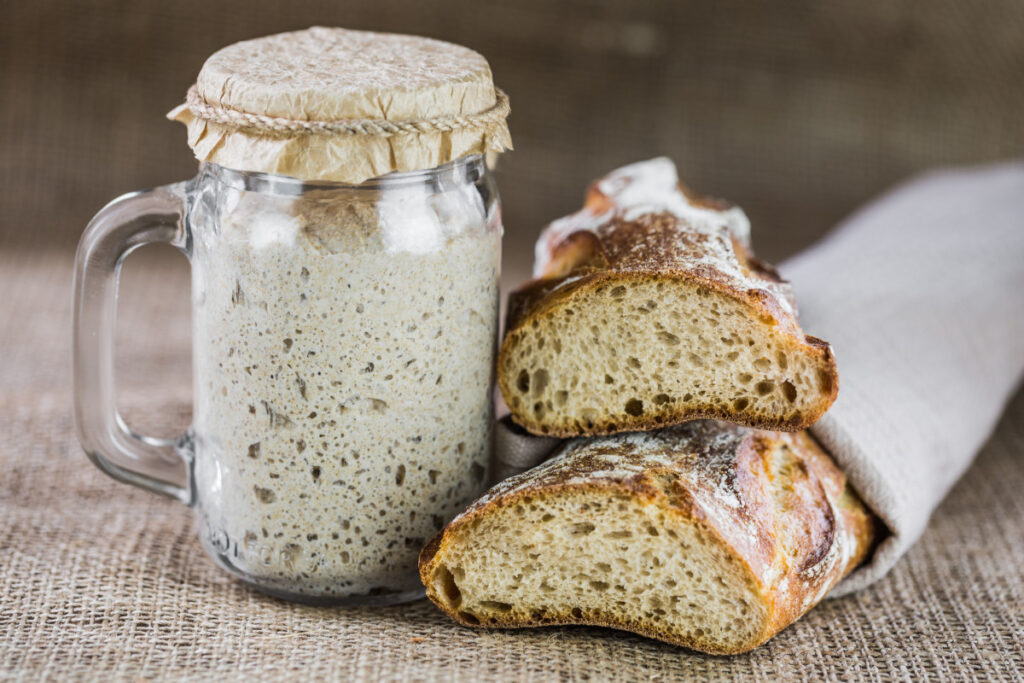Yeast-Free Sourdough Starter Recipe: A Natural Way to Start Baking

Introduction
Welcome to our guide on creating a yeast-free sourdough starter! Whether you're looking for a natural alternative to commercial yeast or simply want to experiment with new flavors and textures in your baking, making a sourdough starter without yeast is a great option. In this article, we'll explain what a sourdough starter is, why you might choose to go yeast-free, and provide you with a step-by-step guide on how to create your own yeast-free sourdough starter.
What is Sourdough Starter?
Sourdough starter is a natural leavening agent used in bread baking. It is made by combining flour and water and allowing it to ferment over time. During the fermentation process, wild yeasts and beneficial bacteria present in the environment and on the flour begin to break down the carbohydrates in the flour, producing carbon dioxide gas. This gas is what gives sourdough bread its characteristic rise and flavor.
Why Make a Yeast-Free Sourdough Starter?
While most sourdough starters rely on wild yeasts present in the environment to provide the leavening action, it is possible to create a sourdough starter without using any additional yeast. By relying solely on the wild yeasts and bacteria present in the flour and environment, you can create a truly natural and unique sourdough starter that captures the flavors of your specific location.
How to Make a Yeast-Free Sourdough Starter
Creating a yeast-free sourdough starter is a simple process that requires just two ingredients: flour and water. Follow these steps to get started:
- Day 1: In a clean glass jar, mix together 1/2 cup of all-purpose flour and 1/4 cup of water. Stir well to combine, ensuring there are no dry flour pockets. Cover the jar with a clean cloth and let it sit at room temperature for 24 hours.
- Day 2: Discard half of the starter mixture and add 1/2 cup of all-purpose flour and 1/4 cup of water. Stir well to combine and cover the jar again. Let it sit at room temperature for another 24 hours.
- Day 3: Repeat the same process as Day 2, discarding half of the starter mixture and feeding it with 1/2 cup of all-purpose flour and 1/4 cup of water. Stir well, cover, and let it sit at room temperature.
- Continue the feeding process once a day for the next 5 to 7 days, or until your sourdough starter becomes active. You will start to notice bubbles forming and a slightly sour smell. Once it becomes active, your yeast-free sourdough starter is ready to use!
Troubleshooting Common Issues with Sourdough Starters
Creating a sourdough starter can be a delicate process, and it's not uncommon to encounter some issues along the way. Here are a few common problems you might face and how to troubleshoot them:
- No activity: If your sourdough starter doesn't show any signs of activity after several days, try adjusting the temperature or using a different type of flour.
- Foul smell: A strong, unpleasant smell is a sign that your sourdough starter has gone bad. Discard it and start over.
- Mold: If you see any signs of mold on your sourdough starter, discard it immediately. Mold can be harmful if ingested.
Conclusion
Making a yeast-free sourdough starter is a rewarding and natural way to explore the world of sourdough baking. By following our simple guide, you can create your own unique sourdough starter without relying on commercial yeast. So grab your flour and water, and get ready to embark on a journey of delicious homemade bread!
F.A.Q.S.
1. Can I use whole wheat flour instead of all-purpose flour?
Yes, you can use whole wheat flour instead of all-purpose flour. Just keep in mind that whole wheat flour may require more water during the feeding process.
2. How long does it take for a sourdough starter to become active?
The time it takes for a sourdough starter to become active can vary depending on various factors such as temperature and the specific wild yeasts present. Generally, it can take anywhere from 5 to 7 days.
3. Can I use tap water to feed my sourdough starter?
Tap water is generally fine to use, as long as it is free from chlorine or other chemicals that could inhibit the growth of wild yeasts. If you're unsure about the quality of your tap water, you can use filtered or bottled water instead.
4. How do I know if my sourdough starter is ready to use?
A ready-to-use sourdough starter will show signs of activity, such as bubbles forming and a slightly sour smell. Additionally, it should double in size within a few hours of feeding. Once you notice these signs, your sourdough starter is ready to be used in your bread recipes.